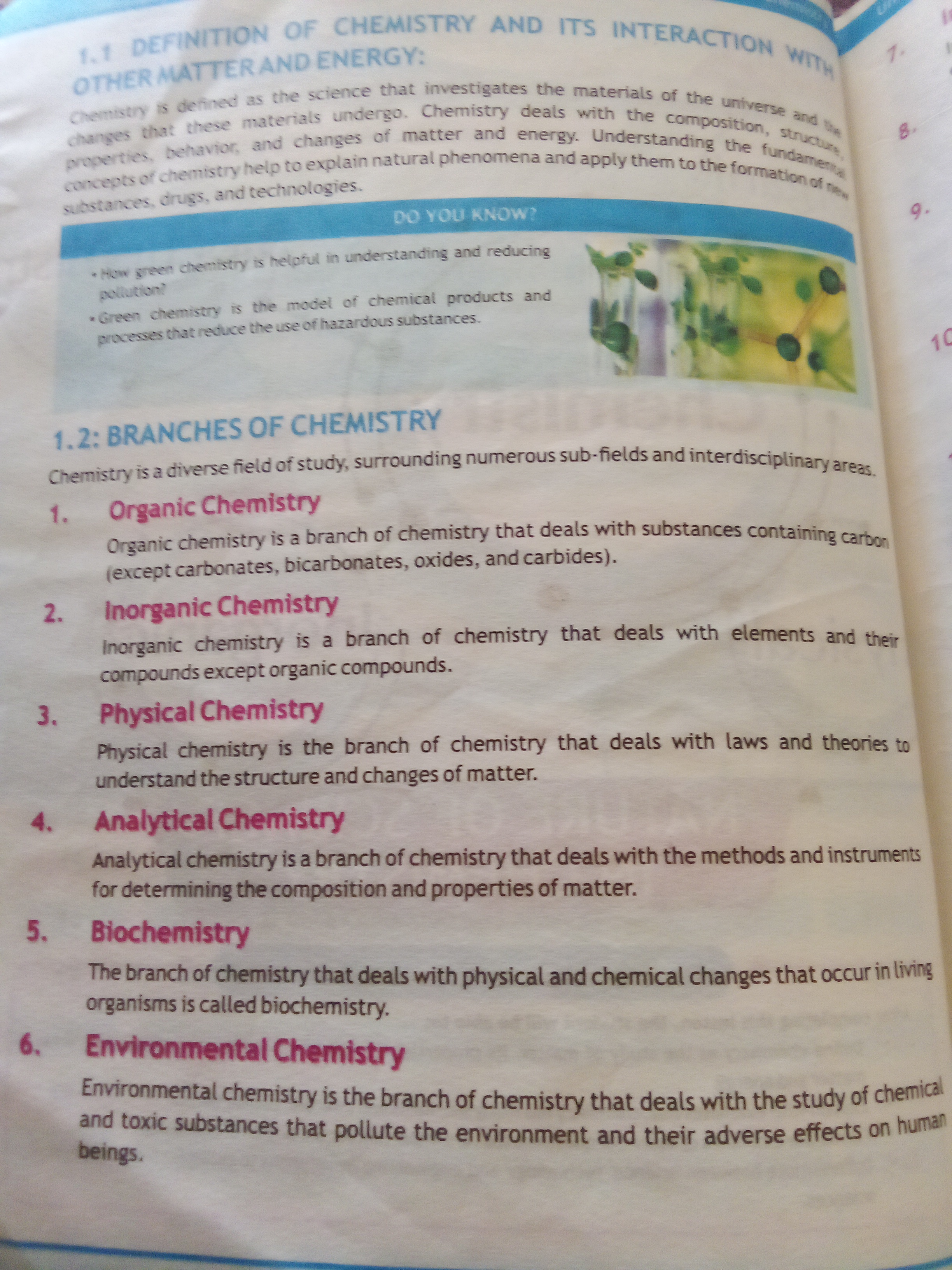What are the branches of chemistry and their definitions?

Understand the Problem
The text provides definitions and descriptions of various branches of chemistry, including organic, inorganic, physical, analytical, biochemistry, and environmental chemistry. It outlines how each branch focuses on different aspects of chemical study.
Answer
Organic Chemistry, Inorganic Chemistry, Physical Chemistry, Analytical Chemistry, Biochemistry, Environmental Chemistry.
The main branches of chemistry are:
- Organic Chemistry - Studies substances containing carbon.
- Inorganic Chemistry - Focuses on elements and compounds excluding organic compounds.
- Physical Chemistry - Deals with laws and theories to understand the structure and changes of matter.
- Analytical Chemistry - Involves methods and instruments for determining the composition and properties of matter.
- Biochemistry - Studies physical and chemical changes in living organisms.
- Environmental Chemistry - Studies chemical and toxic substances that pollute the environment and their effects on humans.
Answer for screen readers
The main branches of chemistry are:
- Organic Chemistry - Studies substances containing carbon.
- Inorganic Chemistry - Focuses on elements and compounds excluding organic compounds.
- Physical Chemistry - Deals with laws and theories to understand the structure and changes of matter.
- Analytical Chemistry - Involves methods and instruments for determining the composition and properties of matter.
- Biochemistry - Studies physical and chemical changes in living organisms.
- Environmental Chemistry - Studies chemical and toxic substances that pollute the environment and their effects on humans.
More Information
These branches cover various aspects of material interactions and transformations, supporting various scientific and industrial applications.
Sources
- Career Development - Branches of Chemistry - indeed.com
AI-generated content may contain errors. Please verify critical information